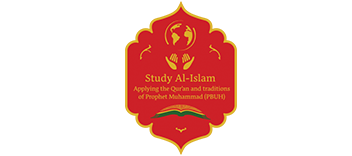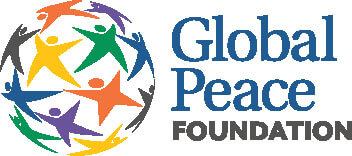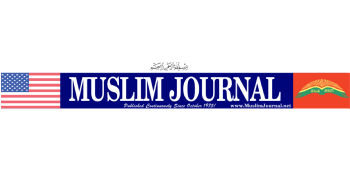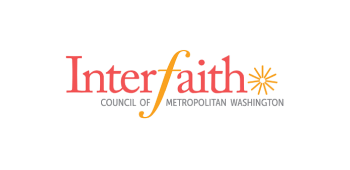Our History
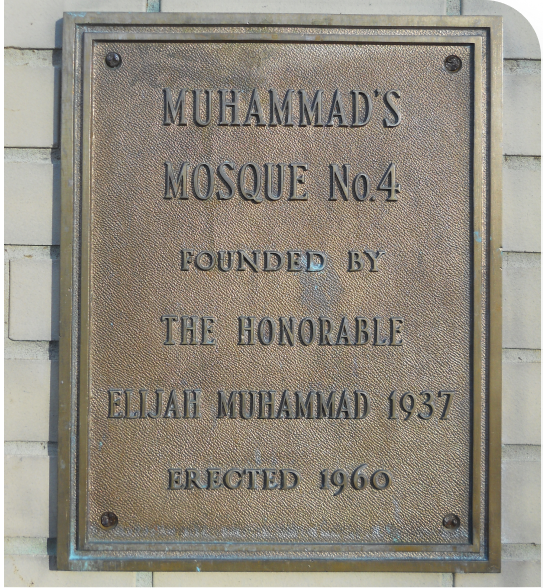
Our History
A Short History of Masjid Muhammad “The Nation’s Masjid”
Dating back to the mid 1930s, Masjid Muhammad, The Nation’s Mosque® (of America) is representative of the oldest established Muslim community in the Nation’s Capital and America. This community established the first Mosque to be built from the ground up in America’s capital city by its citizens, and the first in America by descendants of enslaved, African Americans and African-Muslims. Also called, “The Nation’s Masjid (Mosque)” or “Washington Masjid”, is the place of worship for several thousand Muslims in the Washington, D.C. area. Every Friday, near midday when the traditional “Adhan” (call to prayer) is heard there, hundreds gather to offer praise and thanks to Allah (G-d) and listen to the Imam deliver a meaningful, inspiring khutbah (sermon). This is the Jumua’h service, the Muslim’s congregational worship, as commanded by Allah in the Holy Quran and as has been practiced in the world for more than 1400 years.
Located just off of New Jersey Ave. NW on 4th Street (ceremonially designated “Islamic Way” by the city), Masjid Muhammad has long been a pillar in the neighborhood, the city of Washington, D.C. and the nation, as well as a leader in an association of numerous Masjids and Islamic Centers nationwide. Under the leadership of the late Imam W.D. Mohammed (raa), it transitioned into mainstream Islam and has gone from smaller circles of self to broader circles of humanity and the universal teachings of the Holy Quran and Prophet Muhammad (saw). Its members have proudly taken serious the responsibility of citizenship, and is comprised of and associated with millions of healthy-minded hardworking loyal Muslims who are in every field of public service and the private sector, and are making significant contributions to support, protect, and invest in the betterment of our society, the United States of America.
Prior to its transition under the leadership of Imam W. Deen Mohammed, this community was not always as diverse as it is now and did not always have such comfortable surroundings for its adherence in the nation’s capital, especially among African Americans. When its initial founder, the Honorable Elijah Muhammad (raa) began teaching in D.C. in the late thirties and early forties, he found ignorance and despair among his people and hostility and hatred among Caucasians. For several years, he held meetings in private homes, housing projects and even street corners, until space was rented on the second floor of a funeral parlor on Vermont Avenue and “R” Street, N.W. This was to become the first “fixed location” in Washington, D.C., of the then, Nation of Islam, and Brother Sultan X, its first minister.
The small community moved to various locations during the next few years, then, in 1942, Honorable Elijah Muhammad and several of his followers were arrested in the Nation’s Capital for refusing to register for military service. Although the community was sustained, this brought a halt to the spread of Islam in the area and across the country. It was not until the 1950’s that the community was able to regain its strength. Incidentally, when they were arrested, it led to the start of the first prison service program across the nation.

During the 1950’s, meetings were again held at various locations, including a store front at “H” Street near 8th and also in Georgetown. Brother Lucious X was the minister during this period of rapid growth and change. In 1959, the community was legally incorporated as Muhammad’s Temple of Islam No. 4 and also known as Muhammad’s Mosque No. 4. Only Detroit, Chicago and Milwaukee had preceded Washington in developing a unified Muslim community.
The rapid growth of this period made a permanent location necessary. Leased store-fronts could not continue to meet the needs of the Washington Muslims. In 1959, several adjacent lots were purchased on 4th Street between “P” and “Q”, to be the site of a new temple, which would become the first mosque.
For many months, believers struggled and sacrificed to raise the funds to build a permanent structure. Many volunteered their construction skills; others cooked dinners and sold the Muhammad Speaks newspapers; bazaars were held to generate income from outside the community. On May 22, 1960 Malcolm X (raa) donated 1,400.00 and helped raise more to build the Mosque in DC. Finally, in 1960, the building was established. It became the first “Masjid” structure to be built from the ground up, and the first to be built in America representing a national community, upon a national aspiration and a national movement. Afterwards, the Hon. Elijah Muhammad himself came to Washington to dedicate the building, December 10, 1960.
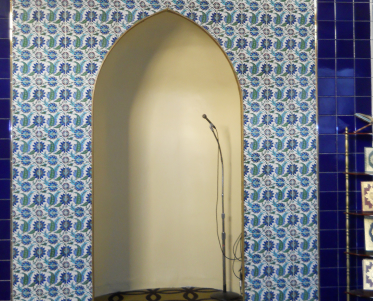
The dedication ceremonies remain vivid in the memory of many of the pioneers. After completing his statements, the leader of the then Nation of Islam began the closing prayer, a prayer which all services used to begin and end. It’s important to note, that this was the universal and same Abraham’s prayer as revealed in the Holy Quran and said by the 1.7 billion Muslims worldwide. The Hon. Elijah Muhammad began with this prayer, the assembled believers standing, holding their hands out in supplication as was the custom. For more than one hour, he continued to pray, asking Allah to bless the building and the believers, to guide them on the right path and to keep evil and indecencies away from the community. Subsequently, that structure became the first Masjid or Mosque to be built in the nation by grassroots American citizens, descendants of enslaved Africans and residents of the District of Columbia. Additionally, it became the first Mosque built in the Nation’s capital by its citizens regardless of race.
When the Hon. Elijah Muhammad passed in 1975, his son, Warith Deen Mohammed inherited, and confirmed with overwhelming majority support, the leadership of the Nation of Islam. He began to implement far-reaching changes, both physical and spiritual in nature. Temple No. 4 or Mosque No. 4, then under Dr. Lonnie Shabazz (Abdul Alim Shabazz), was renamed the Washington Masjid. The word “Masjid” was introduced, meaning a place of prostration and worship. Other changes included removing most of the seating to permit worship in the traditional Islamic manner, dissolution of the militaristic Fruit of Islam, called “FOI”, which had been initiated in response to the hostility which the early Muslims in America had encountered, and admission of Caucasians into the community. Essentially, under the leadership of the late Imam W.D. Mohammed, Masjid Muhammad, as hoped by his father Elijah, transitioned from a nationalist presentation of Islam into the mainstream practice of proper universal Islam following the Quran and the life example of Prophet Muhammad of over 1400 years ago.
Most important, however, were the spiritual changes. Khalil Abdel-Alim (raa) was appointed the first (Resident) Imam by W.D. Mohammed in 1975. With him came a new spirit of Islam into the community, based upon the pure teachings of the Holy Quran. The allegorical and symbolic teachings of the Nation of Islam were transformed into direct guidance based upon the revealed words of Allah. A policy of truthfulness and openness was implemented; lines of communication were established not only with other Muslim communities in Washington, D.C., but with sincere Christian and Jewish groups. It was during the period of the late 1970s, Masjid Muhammad became the leader in interfaith relationships and it continues to be a significant faith community partner today, as well as a bridge builder to help the cultural and religious divide.
In December 1982, Sultan Muhammad, the son of Jabbir Muhammad, who is the brother of Imam W.D. Mohammed, and manager of former heavyweight champion Muhammad Ali, was appointed Resident Imam, and along with him came a renewed faith in Al-Islam, revived efforts in the community to strengthen efforts towards greater progress for a more viable economic program. And, Washington Masjid was later renamed Masjid Muhammad. The vast majority of Masjid’s developmental activities are organized through committees and departments established for a specific task identified in the names of the committees and departments.
In 1990, Imam Yusuf Saleem was appointed and then elected the Imam of Masjid Muhammad. An educator by profession, prior to his appointment to serve as the Imam, he was called to Chicago where he served as a teacher and was appointed to serve as the National Director of Education and was tasked to, among other things, standardize the curriculum. A close companion of Imam Mohammed, Imam Saleem traveled along with him on many of his high profile trips across the nation and abroad. Imam Saleem was the first local or Washingtonian to hold that position and he has been the longest serving up till his retirement in 2010.
In September 2010, Imam Talib Muttaqee Shareef became the first President and Imam to have been solely “elected” to the position by the community of Masjid Muhammad in its history. He is currently serving that leadership position. Having just retired from the United States Air Force after completing 30 years of active service at the highest enlisted rank, with a Masters Degree in Business, a graduate of the Foreign Language Institute majoring in Arabic and the Middle East, and having served as an Imam in several cities, he was resourced to continue leading and building upon Masjid Muhammad’s rich history. Under his leadership, the words “The Nation’s Mosque” were officially added to its title. This decision, overwhelmingly supported by the community, bridged its history as having been the oldest Muslim community in the Nation’s capital, having built the first Mosque as citizens of America in the capital, having been the first grassroots citizens to build a mosque in America, and having been a national representative of a national community since its establishment in the 1930s.

The community of Masjid Muhammad has emerged as an important and respected voice promoting peace, racial and religious dialogue, understanding, cooperation, and mutual respect for differences. It initiated and led interfaith relations and is a “charter” and subsequently the oldest Islamic Faith group member of the Interfaith Conference of Metropolitan Washington. It continues to be a significant faith community partner today, as well as a bridge builder to help the cultural and religious divide. With a significant veteran membership, it initiated and was home for the nation’s first Muslim American Veterans Association (MAVA), which now has several chapters and is growing around the nation. The first Islamic Chaplain of the U.S. Armed Forces was a member of Masjid Muhammad during his days as an enlisted Muslim soldier. In the 70s, it started the very first Muslim Boys and Girls Scouts program in the Nation’s Capital region. Members of Masjid Muhammad were highly instrumental in establishing the American Muslim Coalition for Good Government, now called, “American Coalition for Good Government.” The community of Masjid Muhammad produced the first Judge for the State of Maryland, who was recently appointed, then elected to the Prince George’s County Circuit Court in a position representative of Maryland’s highest courts of record.
The community of Masjid Muhammad is a role model in its teachings and commitment to building individual and family life, and in building a society rich in diversity and rooted in mutual respect. It has several members engaged in the productive life of several cities through volunteerism, social services, youth activities, senior citizen support, community and business development, job creation and job skills training. It is reflective of its national association which is comprised of millions of hardworking loyal Muslims who are in every field of public service and the private sector, and are making significant contributions to the city and United States of America.
The Nation’s Mosque, Masjid Muhammad of the Nation’s Capital may not be comparable to the great mosques of the Islamic world in architectural elegance or magnificent decorations, but the spiritual dedication upon which it was established and which continue to permeate its walls bear ample testimony to the significance of this building to not only the Washington Muslim community but also to the community of Muslims across America.

